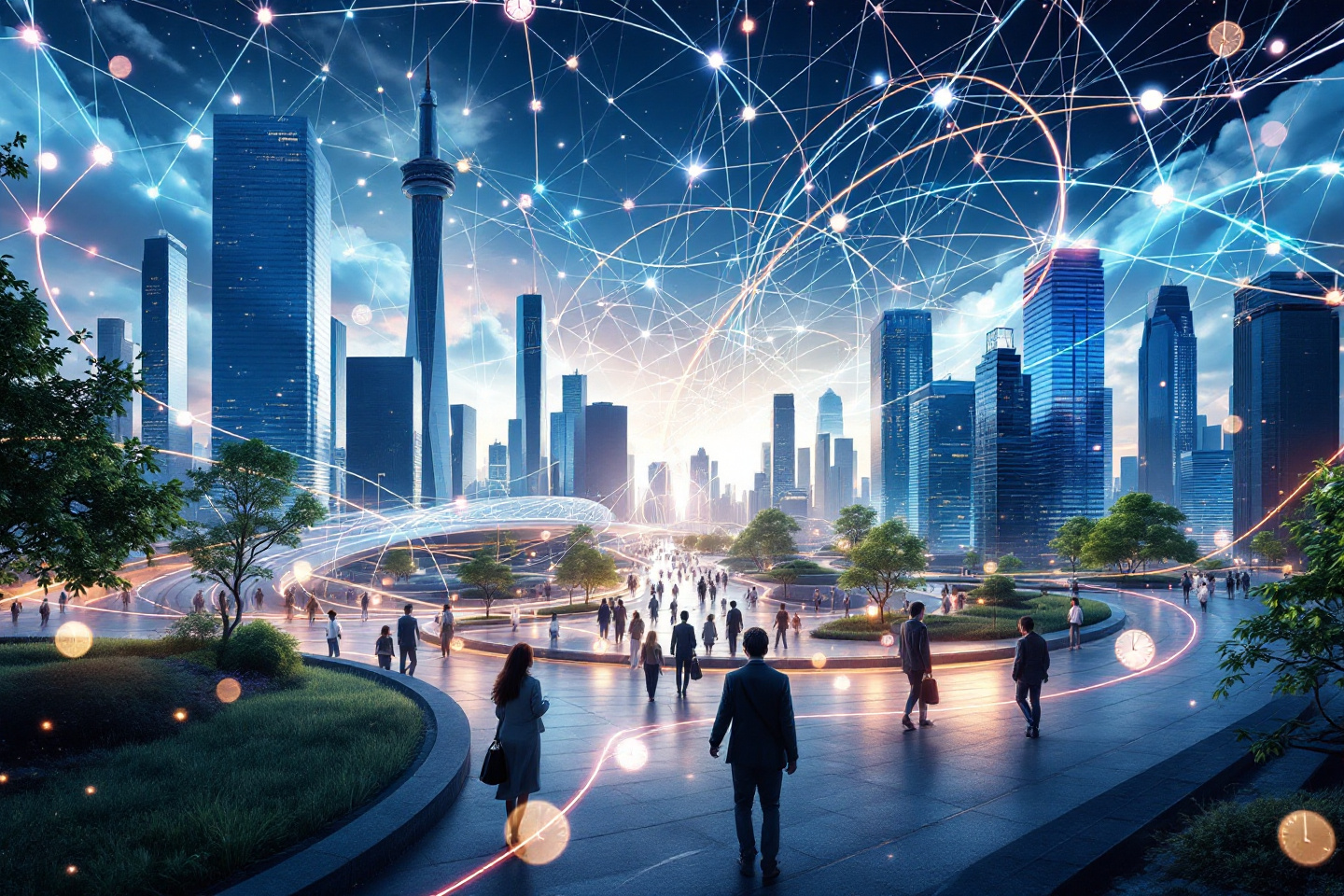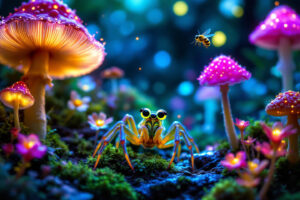We like to imagine time as a great river, flowing in one direction, carrying us forward from past to future. We mark it with clocks, calendars, and memories, believing it to be a steady force beneath everything we do. But what if time isn’t something we move through, but something we create by interpreting change?
Look around you. Is anything truly still? A candle flickers, a breath is drawn, a thought emerges and fades. Science suggests that reality is not a sequence of moments strung together but a vast network of transformations. The world is not a stage filled with things, it is a constant unfolding of events, each shaping the next. Understanding this changes everything: our sense of self, our place in the universe, even the way we measure existence itself.
Thinking Beyond Objects
We are conditioned to see the world as made up of things – solid, enduring entities that persist through time. A mountain, a tree, a stone, these seem permanent, existing independently of change. But this view is an illusion. At the deepest level, everything is in flux.
Events, Not Things
- A storm is not a thing—it is an unfolding process of wind, moisture, and pressure shifts.
- A wave is not a static object—it is a movement of water, with different molecules occupying it at every moment.
- Even a human being is not a fixed entity, but a continuous process of chemical reactions, thoughts, and interactions.
The distinction between “things” and “events” is crucial. Things persist, events happen. The world is not a collection of objects, it is a collection of occurrences.
“What we call ‘things’ are just slow-moving events.”
Stability Is an Illusion
- Mountains erode, coastlines shift, and stars burn out over time.
- Even so-called solid objects at the atomic level are a buzzing cloud of interactions.
- The brain creates an illusion of permanence to help us navigate the world.
A Web of Interactions
Instead of picturing the universe as made up of fixed entities, we should see it as a network of transformations. Everything we observe is part of an unfolding interaction, where past and future do not exist independently but are defined by the relations between events.
The Fabric of Change
- No event exists in isolation—everything is influenced by something else.
- Small changes ripple outward, affecting countless other interactions.
- What we call “causality” is just the pattern of how events shape one another.
“Nothing happens alone, every event is woven into the fabric of existence.”
How Complexity Forms from Simplicity
- Large structures emerge from countless smaller events.
- A thunderstorm is the result of millions of tiny water droplets, shifting air currents, and temperature variations.
- A conscious mind is not a single entity but a continuous interplay of neural interactions.
Understanding that reality is built from relationships rather than fixed elements shifts how we see everything from physics to identity itself.
From Simple Interactions to Consciousness
- Just as rivers carve landscapes, repeated neural interactions shape thoughts.
- A single neuron is meaningless, but billions together create awareness.
- The mind itself is not a fixed entity but a collection of ever-changing processes.
“Thought is a ripple in the ocean of interactions.”
We Are Processes, Not Fixed Beings
This shift in thinking extends beyond physics, it transforms how we understand ourselves. We often see our identity as something solid, a core “self” that remains constant. But this, too, is an illusion.
The Self as a Changing Flow
- We are not static beings—we are an ongoing process of thoughts, emotions, and experiences.
- Our cells, memories, and perspectives constantly change.
- Just as a river is never the same from moment to moment, neither are we.
If everything is change, then personal identity is not a fixed thing but an evolving pattern. We are not objects moving through time; we are shifting processes interacting with the world.
Memory and Identity
- Memory is not a static archive—it is a reconstruction that changes over time.
- Each time we recall something, we subtly alter it, blending past and present perceptions.
- Identity is fluid, shaped by the way we reinterpret our own history.
“We do not remember, we rewrite.”
The Illusion of a Continuous Self
- The self feels unified, but is actually fragmented across different moments.
- Our sense of identity is held together by habit, memory, and social interaction.
- Who we are today is not who we were a decade ago, nor who we will be in the future.
What Happens Without Time?
If we let go of the idea of time as an independent entity, we gain a new way of understanding the universe.
The World as a Network of Events
- Instead of picturing time as a line, imagine a web of interactions.
- Events influence each other, creating patterns of change without a single timeline.
- Reality becomes a dynamic interplay of connections rather than a series of frozen moments.
This view helps us make sense of modern physics while also resonating with ancient philosophies that emphasized impermanence and interconnection. The world is not a stage where events happen—it is the events themselves.
“Reality is not what endures, but what happens.”
Entropy
- What we perceive as time may be better understood as an increase in disorder.
- The universe moves from structured states to more complex, chaotic ones.
- Time is not an independent force but the result of this growing complexity.
Living in a World Without Time
- If events, not things, define reality, then permanence is an illusion.
- The way we measure time is merely a way of describing interactions.
- Letting go of the idea of fixed time allows us to embrace the richness of change.
Final Thoughts
If the universe is made of change, not permanence, then our task is not to cling to stability but to embrace transformation. Life is not a series of fixed states, but a continuous unfolding. Meaning is not found in static definitions, but in the connections we create.
Perhaps the key to understanding reality is not resisting change, but moving with it—seeing not just the things around us, but the patterns of happening that shape everything.
“We do not live in time. we live in change.”



